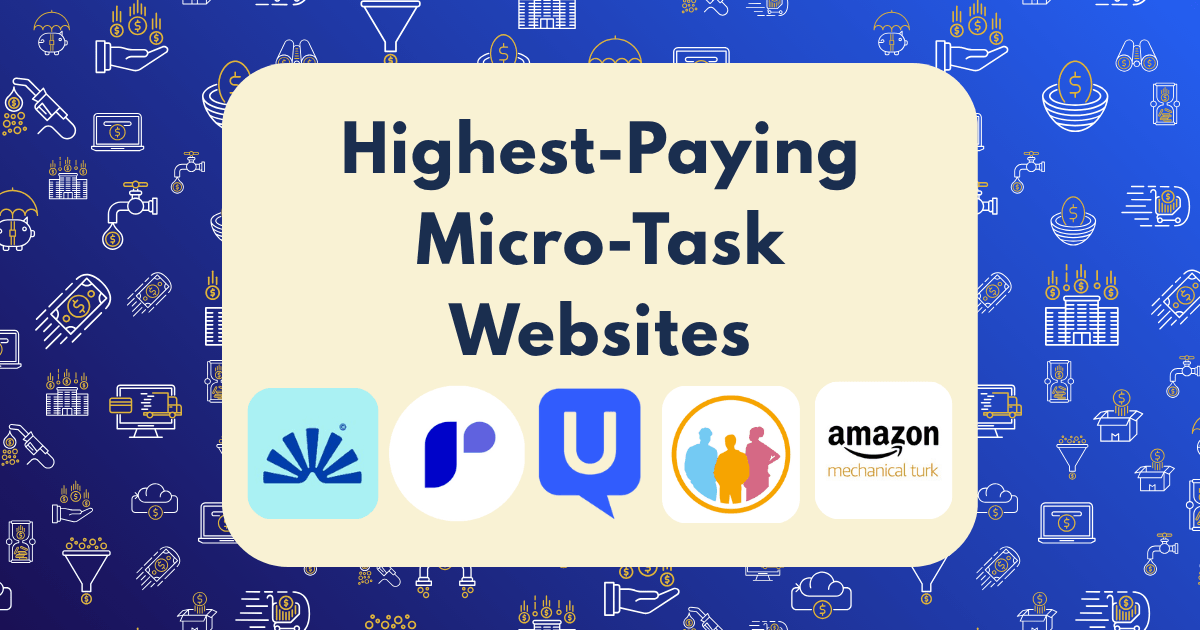User Testing Side Hustle: How I Make $200/Week Testing Websites and Apps

In the pursuit of financial freedom, finding the right side hustle can dramatically accelerate your wealth-building journey. While many opportunities promise easy money, few deliver the perfect blend of accessibility, flexibility, and genuine income potential that user testing provides.
For the past six months, I’ve consistently earned $200+ weekly by testing websites and apps in my spare time. This isn’t just pocket change—it’s meaningful income that’s funding my investment accounts while requiring minimal time commitment and zero startup costs.
Today, I’m pulling back the curtain on this underutilized side hustle, sharing the exact strategies, platforms, and psychological approaches that have made user testing one of my most reliable income streams.
What Is User Testing and Why Companies Pay for It
Before diving into the earnings potential, let’s understand why this opportunity exists.
User testing is the process where real people (like you and me) evaluate websites, apps, and digital products by completing specific tasks while sharing our thoughts aloud. Companies pay for this feedback because:
- It reveals blind spots: Developers are too close to their products to see usability issues
- It prevents costly mistakes: Fixing problems after launch costs 100x more than during development
- It provides diverse perspectives: Different users interact with products in unexpected ways
- It validates design decisions: Data-driven evidence supports or challenges assumptions
This creates a win-win scenario: companies get invaluable insights to improve their products, and we get paid for our honest opinions and natural reactions.
My User Testing Income Breakdown
Let’s get to the numbers. Here’s my average monthly income from user testing platforms over the past six months:
| Platform | Tests/Month | Avg. Pay/Test | Monthly Income |
| UserTesting | 12 | $10 | $120 |
| Respondent | 2 | $100 | $200 |
| UserLytics | 6 | $20 | $120 |
| TryMyUI | 5 | $10 | $50 |
| TestingTime | 1 | $50 | $50 |
| Validately | 4 | $15 | $60 |
| TOTAL | 30 | $20 (avg) | $600 |
That’s approximately $150 per week, though in my best weeks I’ve exceeded $250. The key is diversification across multiple platforms to ensure a steady flow of testing opportunities.
The Top User Testing Platforms: Analyzed and Ranked
After testing dozens of platforms, I’ve identified the most reliable options based on test frequency, pay rates, and user experience:
1. UserTesting
- Pay rate: $10 for 15-20 minute tests, $30-$120 for live conversations
- Test frequency: High (multiple opportunities daily if you qualify)
- Payment method: PayPal (7 days after test approval)
- Unique advantage: Largest platform with the most testing opportunities
UserTesting remains the gold standard in the industry. Their platform is intuitive, payments are reliable, and opportunities are plentiful. The key to success is maintaining a high rating (4.5+ stars) to receive more test invitations. I’ve completed over 200 tests with them in the past year.
2. Respondent
- Pay rate: $50-$200 per study (typically 30-60 minutes)
- Test frequency: Medium (several opportunities weekly, but highly competitive)
- Payment method: PayPal (5-10 days after completion)
- Unique advantage: Highest pay rates in the industry
Respondent isn’t strictly a user testing platform—it focuses on market research studies and user interviews. However, many studies involve evaluating products and websites. The application process for each study is more involved, but the pay rates justify the effort.
3. UserLytics
- Pay rate: $10-$90 depending on test complexity
- Test frequency: Medium (3-10 opportunities weekly)
- Payment method: PayPal (15 days after approval)
- Unique advantage: International opportunities and diverse test formats
UserLytics offers a good balance of test frequency and pay rates. Their platform supports multiple languages, making it accessible to non-English speakers. I’ve found their screening questions to be more reasonable than some competitors, resulting in higher qualification rates.
4. TryMyUI
- Pay rate: $10 for 20-minute tests
- Test frequency: Low to Medium (2-5 opportunities weekly)
- Payment method: PayPal (weekly on Fridays)
- Unique advantage: Detailed feedback system helps improve your testing skills
TryMyUI has a more rigorous rating system than most platforms, which can be challenging for beginners. However, this leads to higher-quality feedback for clients and better opportunities for top-rated testers. Their weekly payment schedule is also convenient for cash flow management.
5. TestingTime
- Pay rate: $25-$90 per test (typically 30-90 minutes)
- Test frequency: Low (1-3 opportunities monthly)
- Payment method: PayPal or bank transfer (10-15 days after completion)
- Unique advantage: Primarily focuses on European companies, offering unique testing opportunities
TestingTime specializes in moderated testing sessions, which pay significantly higher than unmoderated tests. While opportunities are less frequent, the higher pay rates make it worth maintaining an active profile.
My 7-Step System for Maximizing User Testing Income
After six months of optimization, I’ve developed a systematic approach that maximizes both qualification rates and earnings:
1. Strategic Platform Selection
Rather than spreading myself too thin across dozens of platforms, I focus on mastering 5-7 high-quality sites. This allows me to:
- Learn each platform’s nuances and preferences
- Maintain high ratings across all accounts
- Develop efficient routines for checking opportunities
Implementation tip: Create a dedicated bookmark folder with all your user testing platforms for easy access.
2. Profile Optimization
Each platform uses screening questions to match testers with appropriate studies. I’ve increased my qualification rate by:
- Completing 100% of profile questions on each platform
- Updating demographic information quarterly
- Adding new skills and experiences as I acquire them
- Using specific, detailed responses rather than generic answers
Implementation tip: Set a calendar reminder to review and update all profiles monthly.
3. Notification System
Speed matters in user testing—the best opportunities fill quickly. My notification system includes:
- Browser extensions for platforms that offer them (like UserTesting)
- Email notifications set to “priority” in my inbox
- Mobile apps configured with push notifications
- Regular checking schedule during peak posting times
Implementation tip: UserTesting typically releases new tests at the top of each hour during business hours.
4. Testing Environment Setup
Creating a professional testing environment improves your ratings and increases your selection rate for premium opportunities:
- Dedicated, quiet testing space
- High-quality microphone (I use a $50 Blue Snowball)
- Stable internet connection (wired if possible)
- Clean, distraction-free desktop background
- Browser with minimal extensions during testing
Implementation tip: Record a practice test and listen to it critically—is your voice clear? Are there background noises?
5. The “Think Aloud” Technique
The most valuable skill in user testing is articulating your thoughts clearly as you navigate websites and apps. I practice the “think aloud” technique:
- Verbalize expectations before actions (“I expect clicking this button will take me to checkout”)
- Explain reactions to each element (“This form is confusing because…”)
- Describe confusion immediately (“I’m not sure what this icon means”)
- Provide constructive criticism with solutions (“This would be clearer if…”)
Implementation tip: Practice narrating your actions while using new websites to develop this habit.
6. Strategic Time Blocking
Rather than constantly checking for tests throughout the day, I’ve identified peak posting times and block 30-60 minutes during these windows:
- Early morning (7-9 AM EST): European companies posting overnight
- Mid-morning (10-11 AM EST): US East Coast companies starting their day
- Early afternoon (1-2 PM EST): Post-lunch test releases
- Evening (7-8 PM EST): Last-minute tests with urgent deadlines
Implementation tip: Create calendar blocks for checking opportunities, treating them like appointments.
7. Feedback Implementation
After each test, I review my ratings and comments to continuously improve:
- Save client feedback in a dedicated document
- Identify patterns in lower-rated tests
- Watch sample tests from 5-star testers
- Implement one improvement in each new test
Implementation tip: After receiving a perfect rating, make notes about what worked well in that particular test.
Common Challenges and How to Overcome Them
The user testing journey isn’t without obstacles. Here are the most common challenges I’ve faced and how I’ve overcome them:
Challenge 1: Low Qualification Rates
Many testers get frustrated by frequently failing screening questions. To improve my qualification rate:
- I track which demographic factors qualify me most often
- I focus on platforms where my background is in higher demand
- I apply to tests immediately when posted (qualification rates drop over time)
- I maintain multiple income streams to offset the unpredictability
Success metric: My qualification rate has improved from 10% to approximately 30% using these strategies.
Challenge 2: Technical Issues
Technical problems during tests can lead to rejected submissions and wasted time. My prevention system includes:
- Running a technical check before each test (microphone, screen recording)
- Closing unnecessary applications and browser tabs
- Using an ethernet connection for important tests
- Having a backup device (tablet/phone) ready for mobile tests
Success metric: I’ve reduced technical failures from 1 in 10 tests to less than 1 in 50.
Challenge 3: Maintaining Consistent Income
User testing opportunities fluctuate based on market demand. To create more consistent income:
- I’ve diversified across multiple platforms
- I’ve expanded my testing capabilities (mobile, prototype, accessibility)
- I track monthly patterns to anticipate slow periods
- I increase application volume during historically busy seasons
Success metric: My monthly income variance has decreased from ±50% to ±15%.
The Psychology of Successful User Testing
Beyond technical skills, psychological factors significantly impact user testing success:
1. The Beginner’s Mind
The most valuable testers approach websites with fresh eyes, noticing issues that experienced users overlook. I deliberately cultivate a “beginner’s mind” by:
- Questioning assumptions about how interfaces should work
- Verbalizing initial impressions before taking action
- Noting emotional responses to design elements
- Identifying points of confusion or hesitation
2. Constructive Criticism Balance
Effective feedback balances honesty with constructiveness. Companies value testers who:
- Identify problems without being unnecessarily negative
- Suggest improvements rather than just criticizing
- Acknowledge positive aspects alongside issues
- Frame feedback from the user perspective, not as personal preferences
3. Adaptability and Learning Orientation
The most successful testers continuously improve their skills:
- Study client feedback to understand what they value
- Watch sample tests from top-rated testers
- Adapt testing style based on the type of product
- Develop expertise in specific industries or platforms
Scaling Your User Testing Income
Once you’ve established a consistent user testing routine, several strategies can help scale your earnings:
1. Specialization in High-Demand Areas
Certain expertise areas command premium rates:
- Accessibility testing for users with disabilities
- Financial services product evaluation
- Healthcare platform usability
- Enterprise software testing
By highlighting relevant experience in these areas, you can qualify for higher-paying opportunities.
2. Progression to Moderated Testing
While unmoderated tests (recording your screen and voice) typically pay $10-20, moderated sessions with live interaction pay significantly more:
- One-on-one interviews: $30-60 per hour
- Focus groups: $50-100 per hour
- Longitudinal studies: $100-300 for multi-session participation
As you build a strong testing history, you’ll receive more invitations to these premium opportunities.
3. Referral Programs
Many platforms offer referral bonuses for bringing in new testers or clients:
- UserTesting: $20 per referred tester who completes their first test
- Respondent: 10% of the earnings from researchers you refer
- TryMyUI: Custom referral programs for bringing in companies
These programs can add hundreds of dollars to your monthly income with minimal additional effort.
4. Creating Testing Tutorials
As you gain expertise, consider creating content about user testing:
- YouTube tutorials on becoming a successful tester
- Online courses for aspiring user testers
- Consulting for companies setting up testing programs
Several top testers have built five-figure businesses teaching others how to succeed in this niche.
Is User Testing Right for Your Financial Goals?
User testing offers unique advantages as a side hustle, but it’s not ideal for everyone. Consider these factors:
Ideal for you if:
- You can articulate thoughts clearly while multitasking
- You have regular access to blocks of uninterrupted time
- You notice details and can provide constructive feedback
- You’re comfortable with technology and learning new interfaces
- You’re seeking supplemental income rather than full-time earnings
Probably not a good fit if:
- You need perfectly predictable income
- You’re uncomfortable recording your voice and screen
- You get frustrated by frequent rejection (failed screeners)
- You have very limited availability during business hours
- You’re seeking to replace a full-time income quickly
Getting Started: Your First 30 Days
Ready to begin your user testing journey? Here’s a structured 30-day plan to get started:
Days 1-3: Platform Setup
- Create accounts on UserTesting, TryMyUI, and UserLytics
- Complete all profile questions thoroughly
- Install necessary testing software and browser extensions
- Set up PayPal account for payments
Days 4-7: Practice and Qualification
- Complete practice tests on each platform
- Watch sample tests from experienced testers
- Prepare your testing environment (quiet space, microphone)
- Familiarize yourself with the “think aloud” technique
Days 8-14: First Tests
- Apply for tests regularly, especially during peak hours
- Focus on providing thorough, thoughtful feedback
- Review your ratings and client comments
- Make adjustments based on feedback
Days 15-30: Expansion and Optimization
- Add additional platforms (Respondent, TestingTime)
- Track your qualification rate and earnings per platform
- Refine your testing approach based on successful tests
- Develop a routine for checking opportunities efficiently
By following this plan, you can realistically earn $50-100 in your first month, with earnings increasing as you gain experience and access to more opportunities.
Final Thoughts: User Testing as Part of Your Wealth-Building Strategy
User testing won’t make you rich overnight, but it offers something equally valuable: accessible, flexible income that requires zero startup costs and minimal risk. The $200/week I earn from testing directly funds my investment accounts—that’s over $10,000 annually accelerating my path to financial independence.
Beyond the immediate income, user testing provides valuable skills that translate to other areas:
- Enhanced critical thinking and problem-solving abilities
- Improved verbal communication and feedback delivery
- Deeper understanding of digital product design
- Exposure to cutting-edge technologies and platforms
Whether you’re looking to pay down debt, build an emergency fund, or accelerate your investments, user testing offers a legitimate pathway to generating meaningful supplemental income on your own terms.
Have you tried user testing as a side hustle? What has been your experience with earnings and qualification rates? Share your insights in the comments below!







